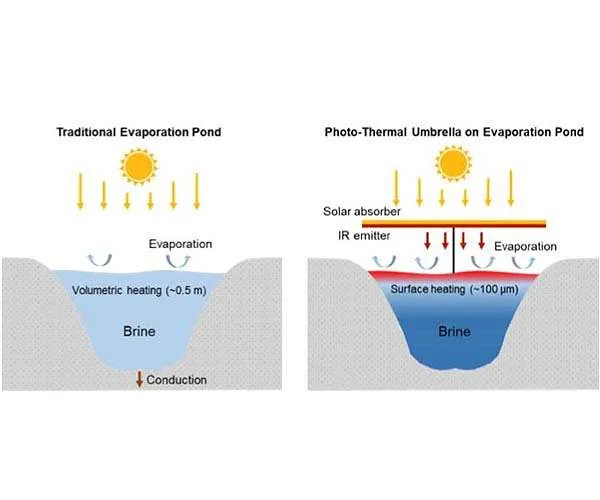American scientists speed up evaporation of wastewater
- A group of scientists from Berkeley Laboratory has found out how to increase evaporation twice with the help of solar energy, based on natural properties of water.

Evaporation ponds are based on the principle of natural vaporization stimulated by the light. Thus, they are an economically efficient way to turn huge volume of polluted water into compact solid garbage. Various industries use evaporation ponds to take care of waste water. However, such artificial reservoirs usually cover huge areas and threaten birds and animals.
A research team from U.S. DOE’s Berkeley Lab has discovered how to accelerate evaporation speed twice by means of natural properties of water and energy from the sun.
Zero liquid discharge is aimed at maximizing the volume of usable water obtained from brine disposal or industrially contaminated water. This technology includes a number of steps, the final of which is usually evaporation ponds. Over the recent years, scientists have proposed quite a few solutions based on usage of solar energy for accelerating the vaporization speed. The majority of ideas are floating structures that absorb light from the sun. They are meant for localization of sun’s heat and light, because vaporization belongs to surface phenomena. However, contaminating particles clutter spongy structures like this, decreasing their efficiency considerably. The structure’s surface can accumulate salt reflecting light instead of absorbing it.
The American scientific group has created a special tool to transform sun radiation. It converts 400-1,500-nanometer-long light waves into the ones with the length of at least 3 micrometers. The purpose of this was to generate light waves of mid-infrared range, which are optimal for absorption by water. The laboratory experiment based on saline solution has allowed the authors to more than double the rate of evaporation compared to the natural process. The researchers claim the device can be optimized to raise evaporating rate by 160 percent.
Also read


